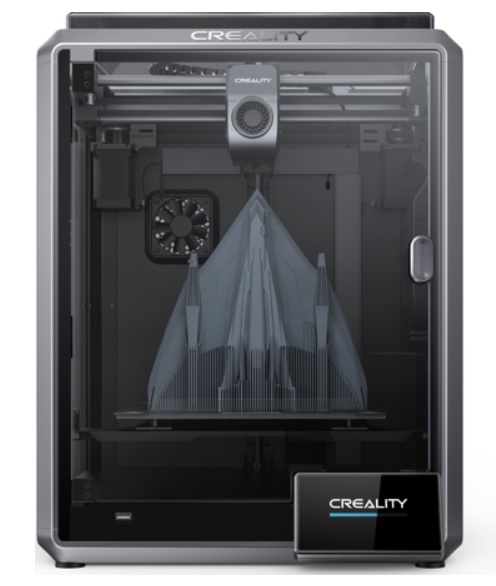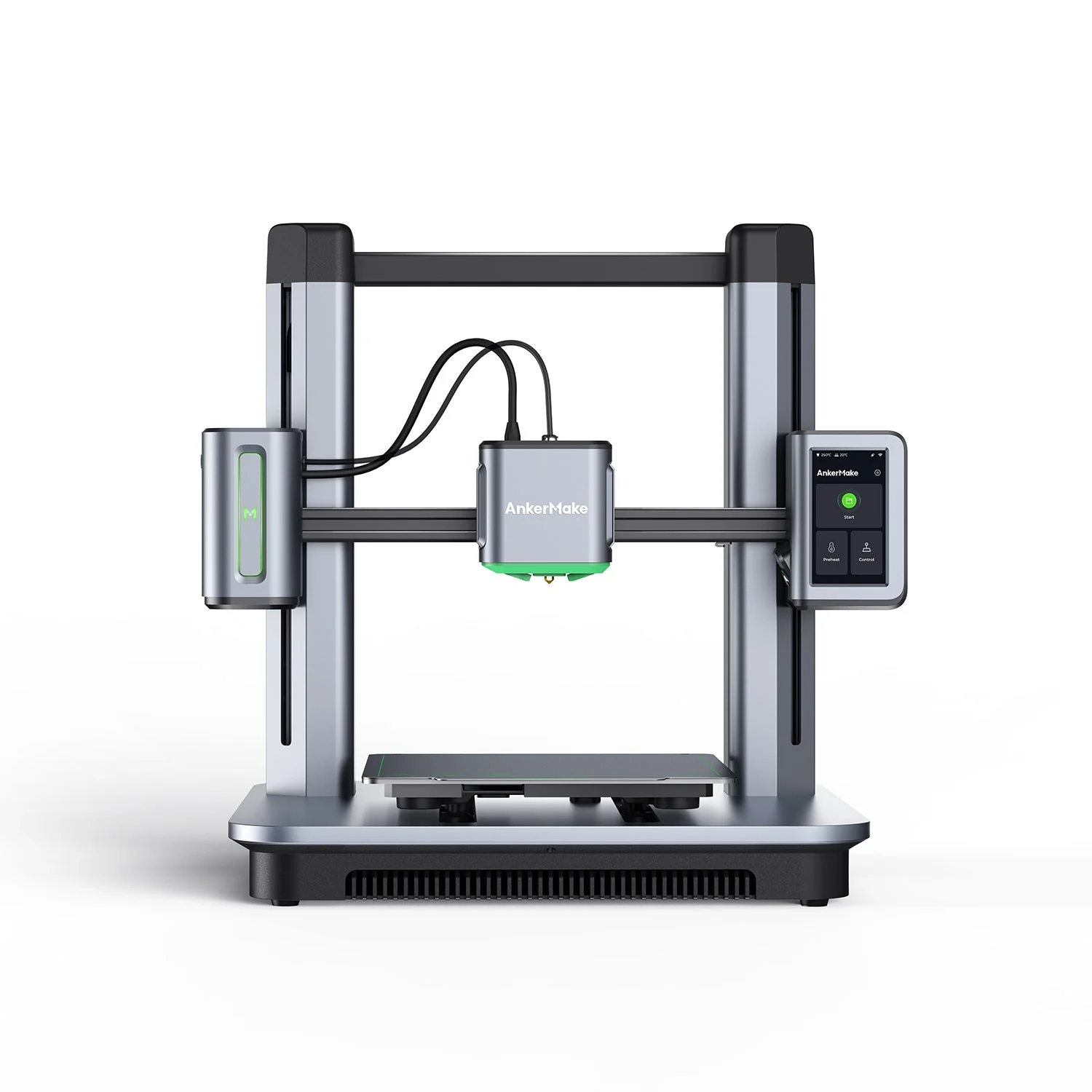Compare K1 vs M5
Comparison between the best 3D printers
Choose the best 3D printer at the best price. The cheapest 3D printers are here.
Buy a 3D printer here with 3D Fila.
 |
 |
|
| Model | K1[BUY K1] |
M5 |
| Printing Material | Filament | Filament |
| Buy Filament for Creality 3D K1 | Buy Filament forAnkerMake M5 | |
| Estimated price | $399,00 | $497,00 |
| Manufacturer | Creality 3D | AnkerMake |
| Release Year | 2023 | 2023 |
| Print Volume [mm] | 220x220x250 | 235x235x250 |
| Printer Size [mm] | 355x355x480 | 502x438x470 |
| Weight [kg] | 12,5 | 12,6 |
| Power Loss Recovery | YES | YES |
| Enclosed printer | YES | NO |
| Bed Leveling | Automatic | Automatic |
| Filament End Sensor | YES | YES |
| Bed type | Heated | Heated |
| Power supply system | Direct Drive | Direct Drive |
| Standard nozzle | 0,4 | 0,4 |
| Maximum Nozzle Temperature [°C] | 300 | 260 |
| Maximum Bed Temperature [°C] | 120 | 100 |
| Maximum printing speed [mm/s] | 600 | 500 |
| Filament holder | YES | YES |
| Camera for supervision | YES | YES |
| Recommended filaments | ABS, PLA, PETG, PET, TPU, PA, ABS, ASA, PC, PLA-CF, PA-CF, PET-CF | PLA, PETG, ABS |
| Recommended slicers | Creality Print; Cura, Simplify3D e PrusaSlicer | AnkerMake Studio (macOS, Windows), Simplify3D, Ultimaker Cura, PrusaSlicer |
| Maximum Resolution [mm] | 0,1 | 0,1 |
| Processor | ||
| Display | Display touchscreen 4,3'' | Touchscreen 4,3'' |
| Power Supply | 110/220V / 350W | 350 W |
| Connectivity | Ethernet / USB / Wi-Fi | Wi-Fi, USB-C, OTA Upgrade |
| Operating systems | Windows, Mac, Linux | Windows, Linux, Macbook |
| Date of registration in the system | 2023-04-17 | 2024-07-08 |
| Release date | 2023 | 2023 |
| Extra features | The K1 is an extremely fast FDM 3D printer, reaching 600mm/s, 12 times faster than standard models. Equipped with a Core XY system and lightweight print head, it offers energy efficiency and high print quality. It stands out for its dual-gear extruder and quickly heated hotend, as well as dual cooling to prevent warping. Its robust structure ensures stability at high speed, with optimized software to speed up the printing process. | The AnkerMake M5 printer stands out for its impressive print speed, reaching up to 500mm/s. It features AI print monitoring, an integrated camera for creating timelapses, auto-leveling bed with pressure sensor, direct extruder, flexible PEI-coated build plate, and Wi-Fi and USB-C connectivity. Assembly is quick and easy, and the printer is designed to deliver high print quality and ease of use. |
| Support for multiple colors and materials (AMS and CFS) | NO | NO |
Notes * |
||
| Cost-benefit | 7 / 10 | 7 / 10 |
| Hardware | 4.2 / 10 | 3.5 / 10 |
| Tela | . | . |
| Print volume | 3 / 10 | 3 / 10 |
| Performance | 5 / 10 | 4 / 10 |
| [BUY K1] |
Conclusion |
| In comparing the Creality 3D K1 and AnkerMake M5 3D printers, several factors stand out that could influence a buyer's decision, particularly in terms of features, performance, and pricing. The Creality 3D K1 offers a slightly lower price point while providing a notable maximum printing speed of 600mm/s, making it exceptionally fast for an FDM printer. It is equipped with an enclosed design, which can enhance print quality by providing a stable thermal environment for the materials used. Additionally, it features dual-gear extruder technology and a maximum nozzle temperature of 300°C, allowing for a broader range of filament materials. This printer is ideal for users seeking high speed and versatility in material compatibility. Conversely, the AnkerMake M5 is priced higher but still provides strong performance with a maximum printing speed of 500mm/s. Although it lacks an enclosure, it compensates with innovative features like AI print monitoring and an integrated camera, making it appealing for those interested in monitoring and managing prints remotely. The combination of easy assembly and a user-friendly interface makes it suitable for both beginners and those who prioritize operational convenience. When considering value, both printers score similarly in cost-benefit analysis. However, the K1 slightly edges out in terms of hardware capabilities and print performance. Ultimately, the choice between these two models will depend on individual needs: those prioritizing speed and versatility may prefer the K1, while users who value modern features and ease of use might lean towards the AnkerMake M5. Each printer brings its strengths to the table, making either a solid choice for 3D printing enthusiasts. |

